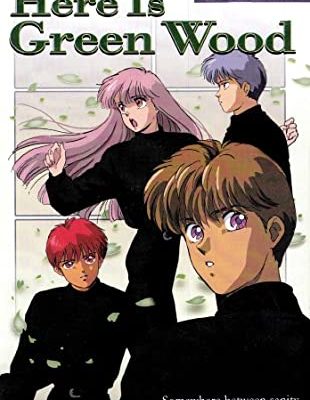
Here Is Greenwood is a title I’ve long heard of but pretty much knew nothing about, other than the vague sense that it was popular with girls. Based on the name and an image or two, I thought it might have been a fantasy series.
Having finally watched the 1991 OVA, it turns out that Here Is Greenwood is actually a shoujo high school comedy about a bunch of weirdos in a dorm. My impression: there really aren’t many series like it in recent memory. The closest I can think of is Honey and Clover, but even that series doesn’t have quite the same level of quiet absurdity.
When I look at humor in anime over the past two decades, it usually goes in two directions: either mellow and low-key or balls-to-the-wall extreme. Those qualities manifest in different forms, whether it’s Hidamari Sketch or Pop Team Epic, but a work usually picks its lane and sticks to it. Here Is Greenwood, on the other hand, has a kind of slow-burn humor of a more down-to-earth anime, but its characters and situations are all over the place. Whether it’s a main character in love with his sister-in-law, the dude who looks like a lady, the Snidely Whiplash-esque plots of a rich upperclassman’s vengeful cousin, or a literal ghost that no one seems terribly shocked by, there’s a sense that both normal and abnormal blend together into a mellow taste.
The OVA is unusual in that it’s not a sneak-peek at the manga or a more liberal adaptation of the manga. Instead, it takes a nine-volume manga and condenses it into a mere six episodes, operating more like a ” best hits” compilation. The anime makes more sense once you know that, but I also know what anime fandom was like in the 1990s, when Here Is Greenwood was on Blockbuster Video shelves. Knowledge about anything related to anime and manga was sparse, nowhere near the wealth of information we have today. Many OVAs were confusing and open-ended, and the result was tons of fandom speculation and musings. I could totally see someone trying to fill in the blanks of Here Is Greenwood armed with only their imagination (and a few 4th-wall-breaking mentions of the manga in the anime itself) to construct their own mental manga. I could also picture those six episodes defining what “anime humor” meant in fans’ minds, like extrapolating an assumed picture of a period in history based on some anthropological items.
I think Here Is Greenwood largely holds up, though there are a few questionable red flags in the year 2020 (notably a joke about touching a kid). In general, the series stands in contrast to the pacing of comedy today, but that also gives it some extra charm.








